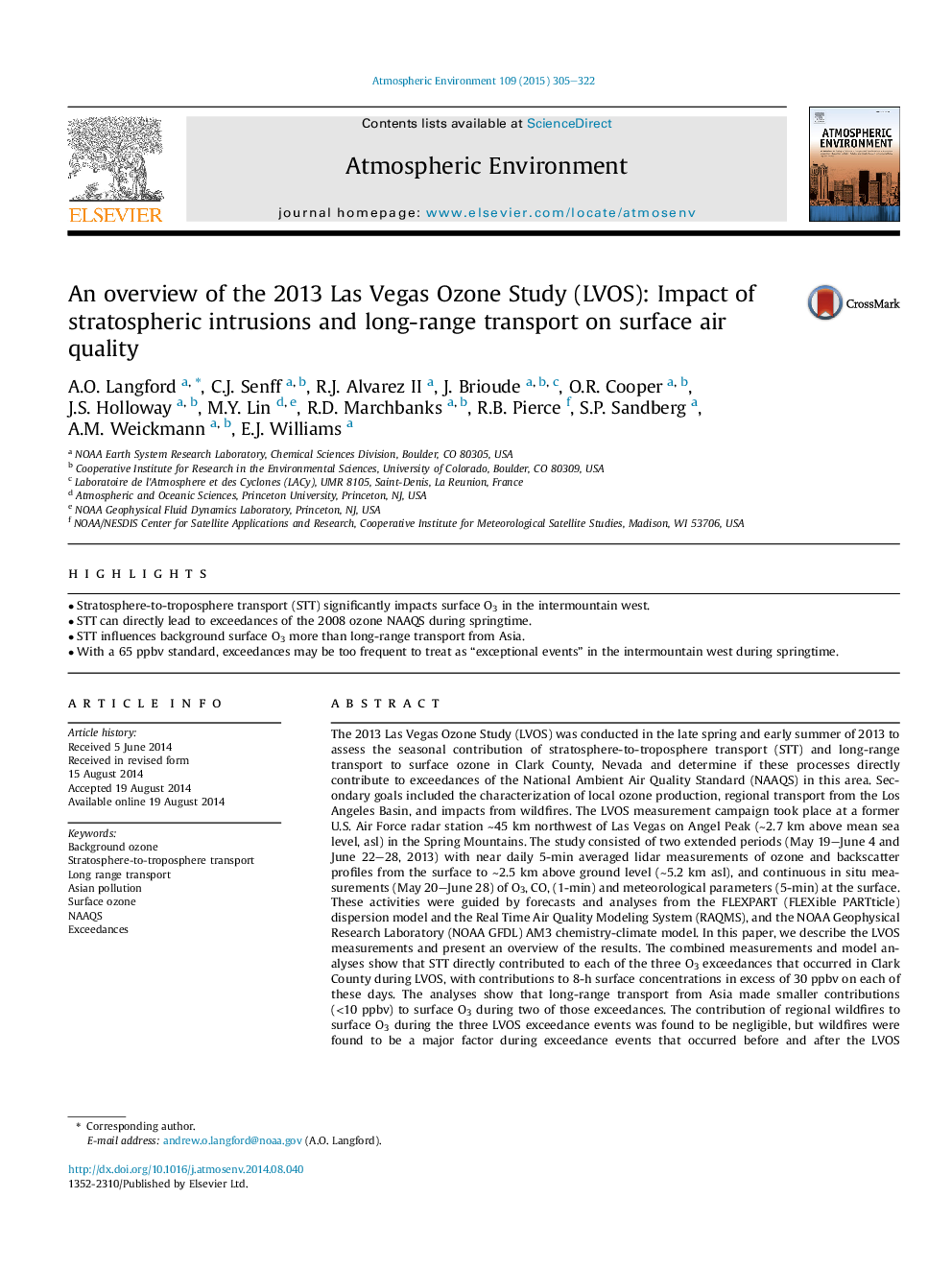| کد مقاله | کد نشریه | سال انتشار | مقاله انگلیسی | نسخه تمام متن |
|---|---|---|---|---|
| 6338256 | 1620362 | 2015 | 18 صفحه PDF | دانلود رایگان |

- Stratosphere-to-troposphere transport (STT) significantly impacts surface O3 in the intermountain west.
- STT can directly lead to exceedances of the 2008 ozone NAAQS during springtime.
- STT influences background surface O3 more than long-range transport from Asia.
- With a 65 ppbv standard, exceedances may be too frequent to treat as “exceptional events” in the intermountain west during springtime.
The 2013 Las Vegas Ozone Study (LVOS) was conducted in the late spring and early summer of 2013 to assess the seasonal contribution of stratosphere-to-troposphere transport (STT) and long-range transport to surface ozone in Clark County, Nevada and determine if these processes directly contribute to exceedances of the National Ambient Air Quality Standard (NAAQS) in this area. Secondary goals included the characterization of local ozone production, regional transport from the Los Angeles Basin, and impacts from wildfires. The LVOS measurement campaign took place at a former U.S. Air Force radar station â¼45 km northwest of Las Vegas on Angel Peak (â¼2.7 km above mean sea level, asl) in the Spring Mountains. The study consisted of two extended periods (May 19-June 4 and June 22-28, 2013) with near daily 5-min averaged lidar measurements of ozone and backscatter profiles from the surface to â¼2.5 km above ground level (â¼5.2 km asl), and continuous in situ measurements (May 20-June 28) of O3, CO, (1-min) and meteorological parameters (5-min) at the surface. These activities were guided by forecasts and analyses from the FLEXPART (FLEXible PARTticle) dispersion model and the Real Time Air Quality Modeling System (RAQMS), and the NOAA Geophysical Research Laboratory (NOAA GFDL) AM3 chemistry-climate model. In this paper, we describe the LVOS measurements and present an overview of the results. The combined measurements and model analyses show that STT directly contributed to each of the three O3 exceedances that occurred in Clark County during LVOS, with contributions to 8-h surface concentrations in excess of 30 ppbv on each of these days. The analyses show that long-range transport from Asia made smaller contributions (<10 ppbv) to surface O3 during two of those exceedances. The contribution of regional wildfires to surface O3 during the three LVOS exceedance events was found to be negligible, but wildfires were found to be a major factor during exceedance events that occurred before and after the LVOS campaign. Our analyses also shows that ozone exceedances would have occurred on more than 50% of the days during the six-week LVOS campaign if the 8-h ozone NAAQS had been 65 ppbv instead of 75 ppbv.
Journal: Atmospheric Environment - Volume 109, May 2015, Pages 305-322